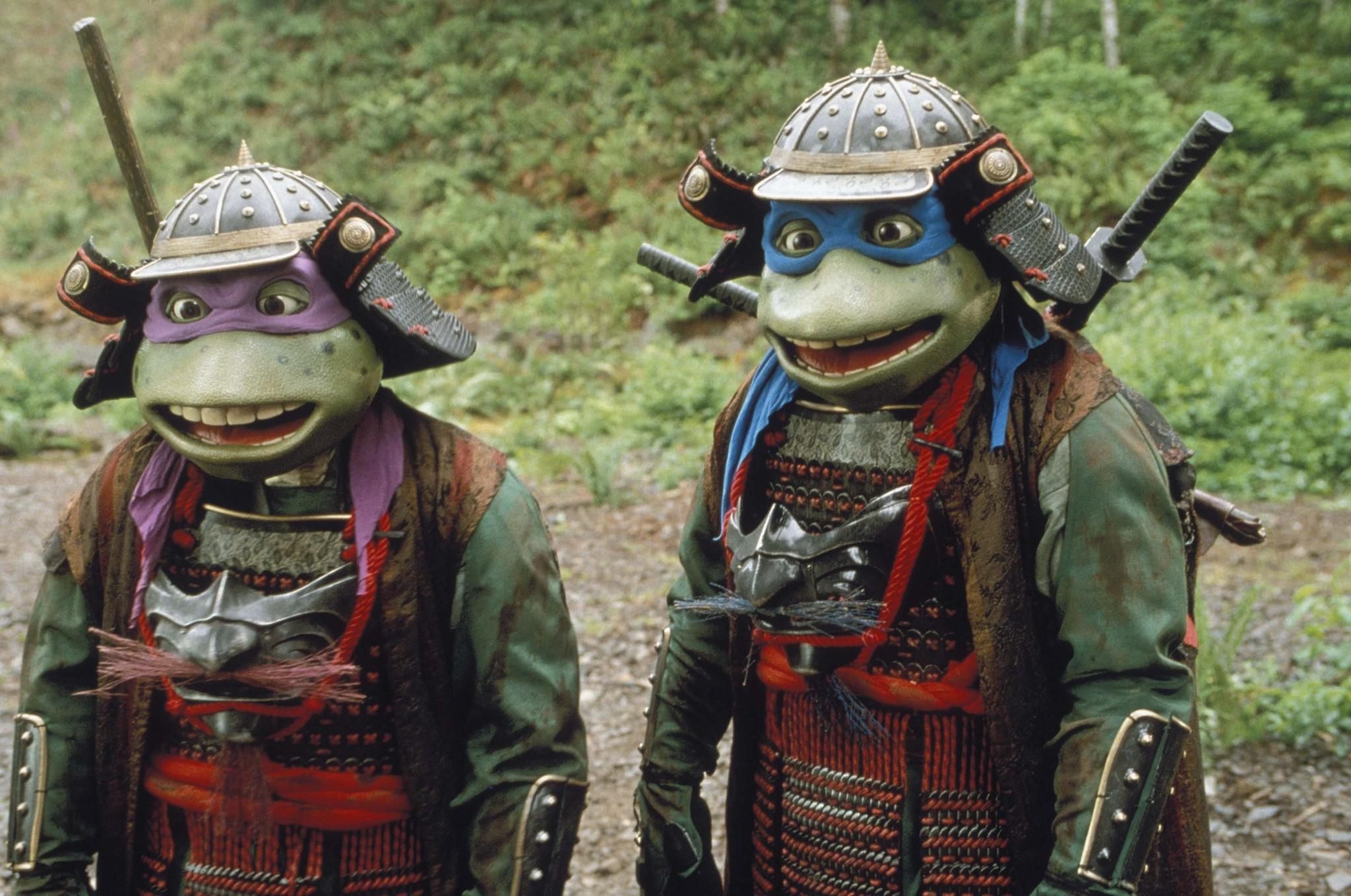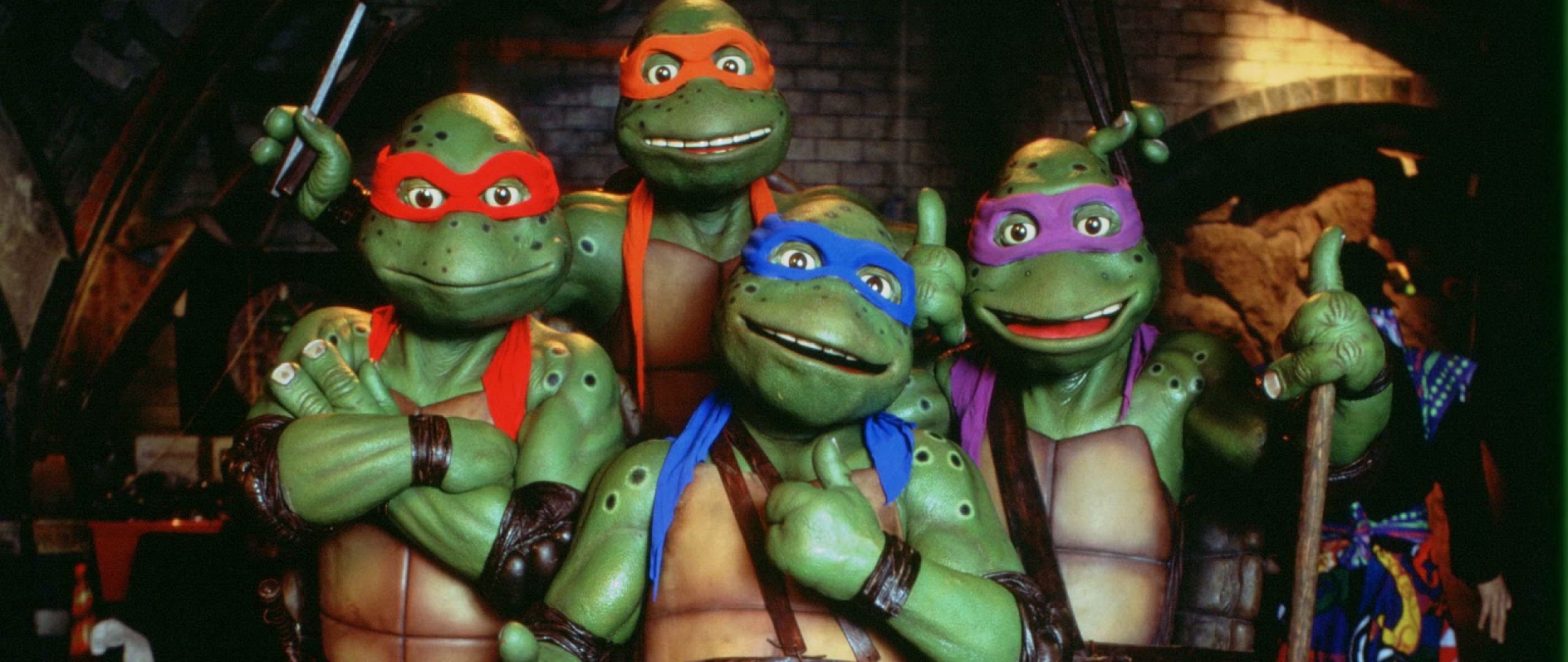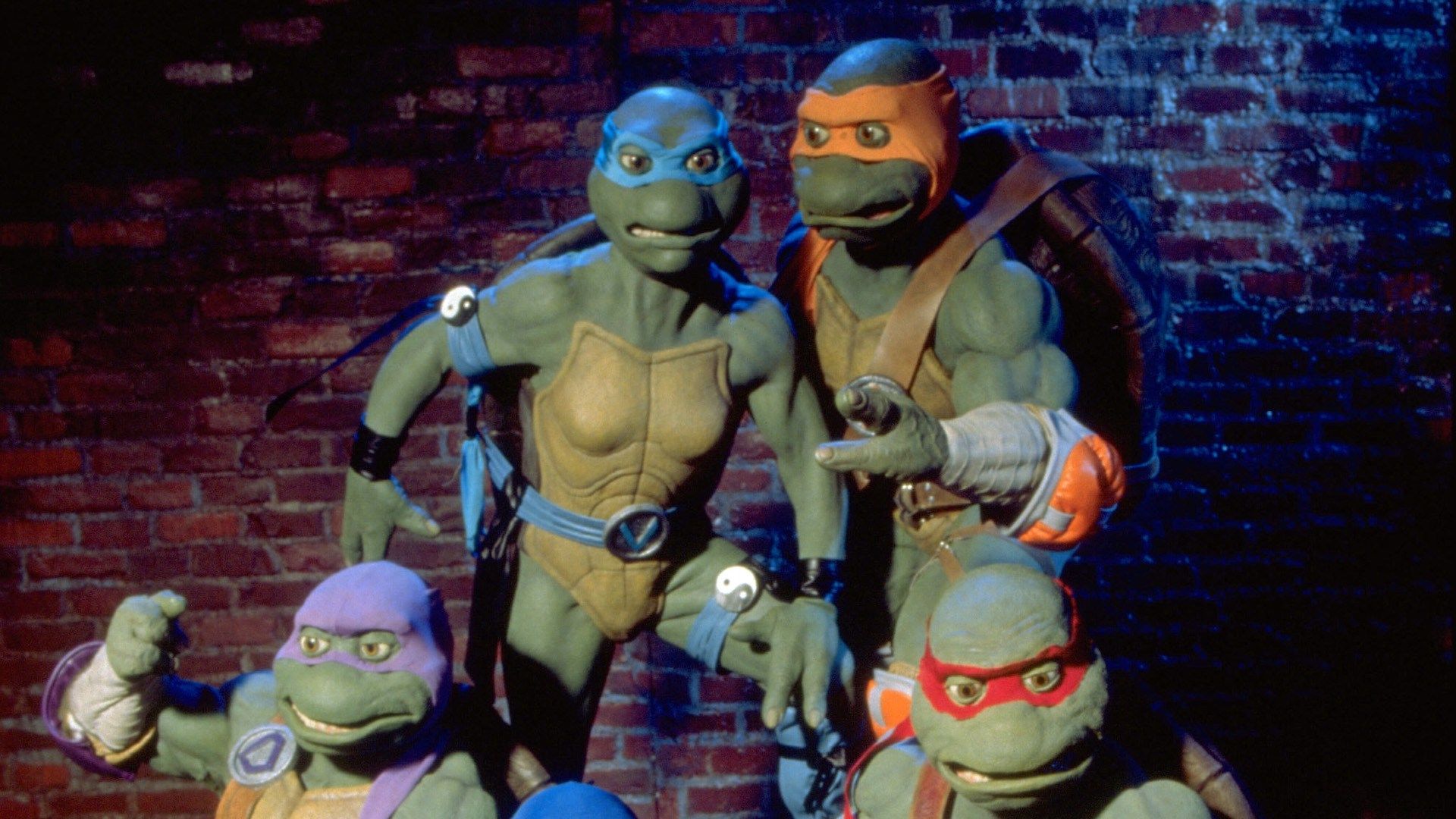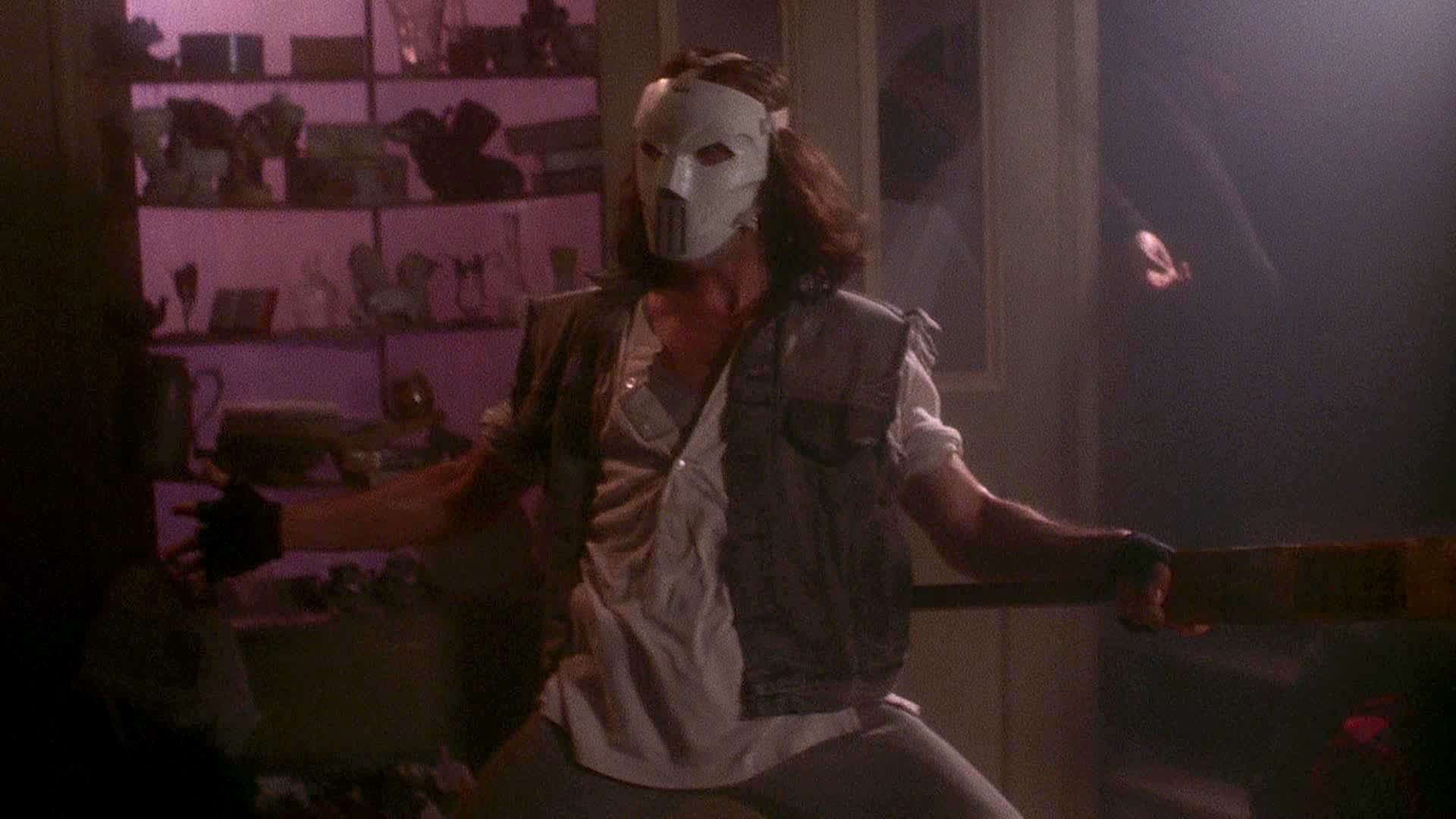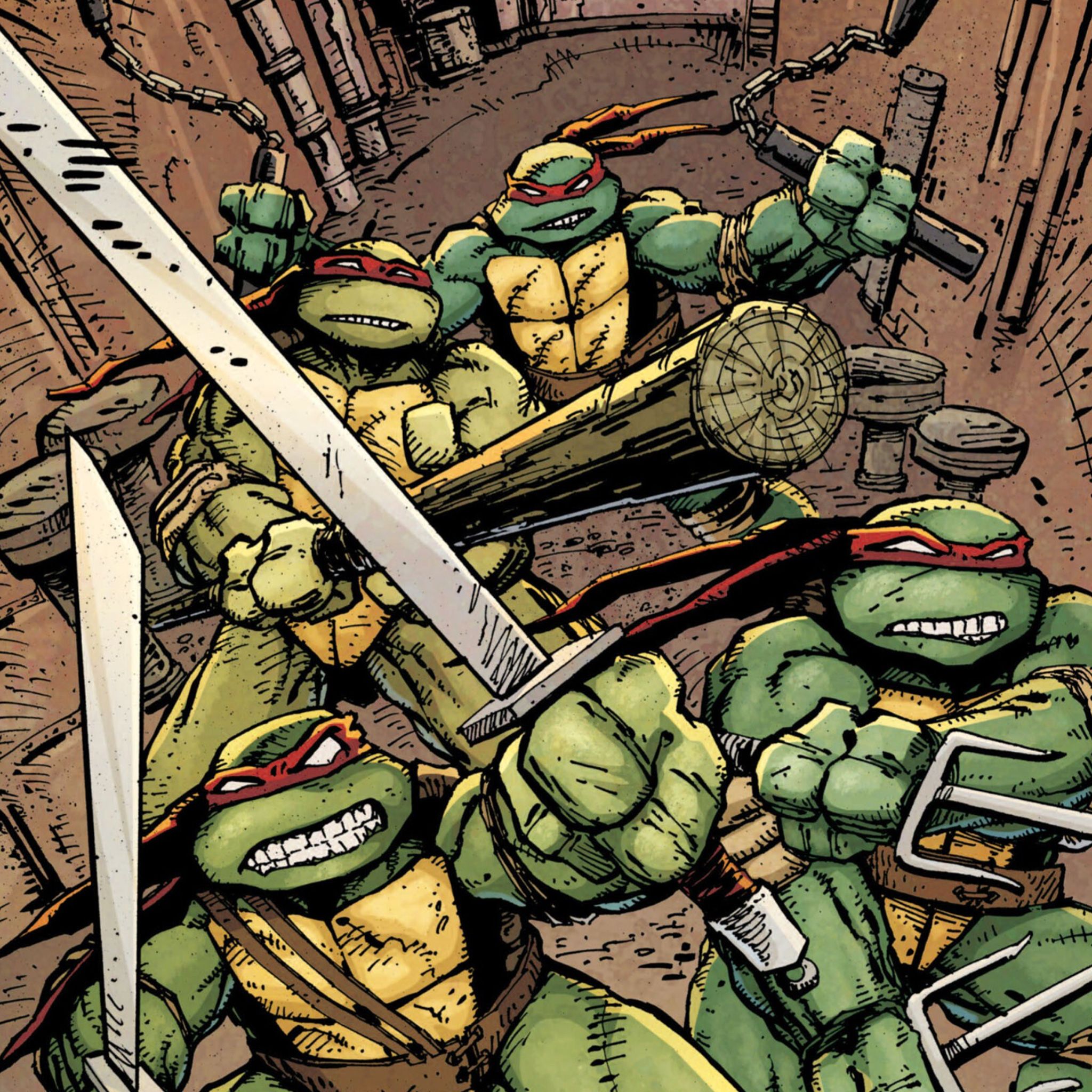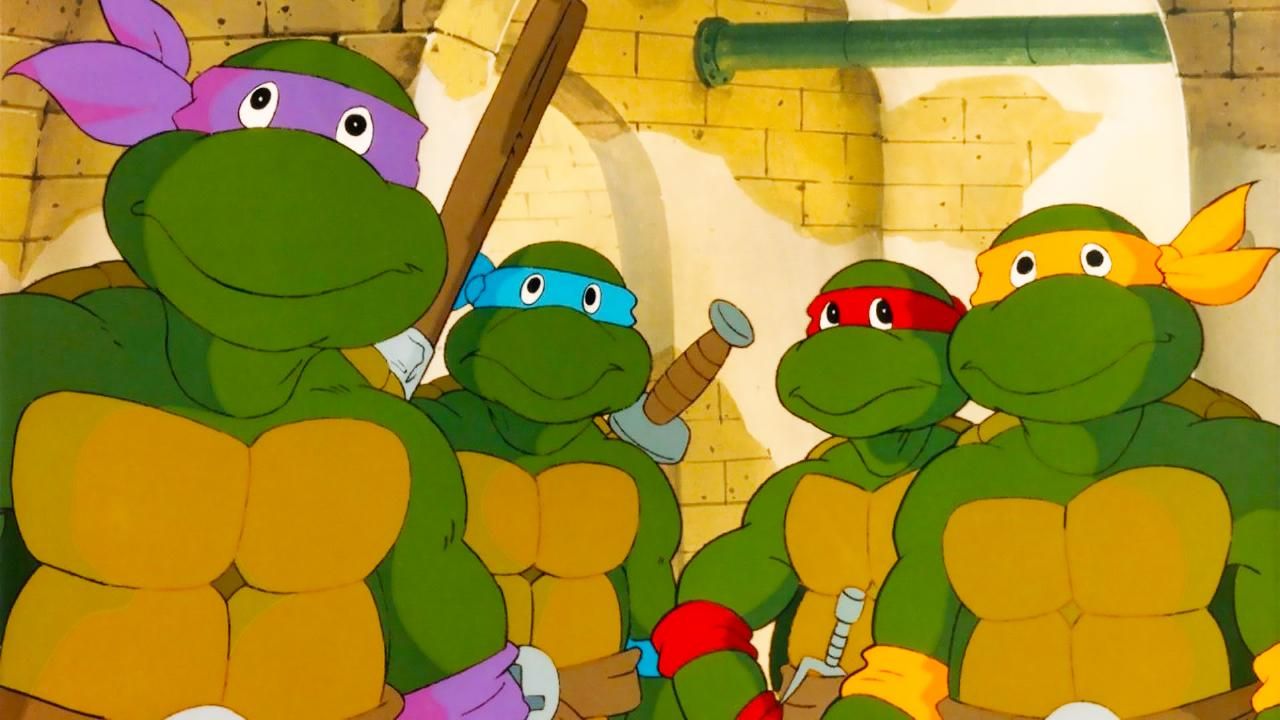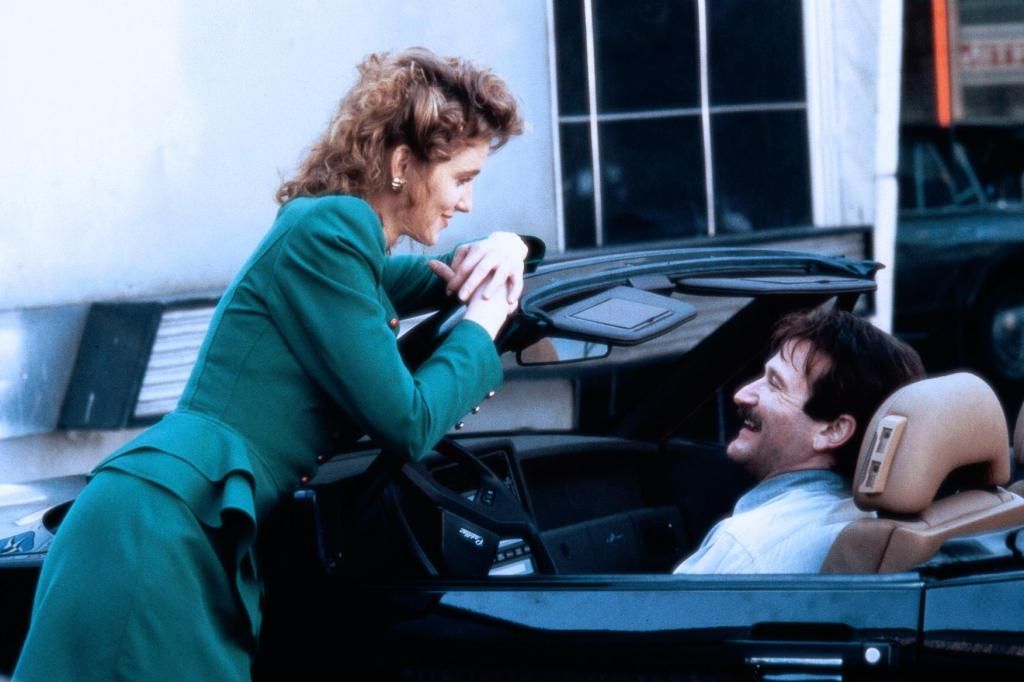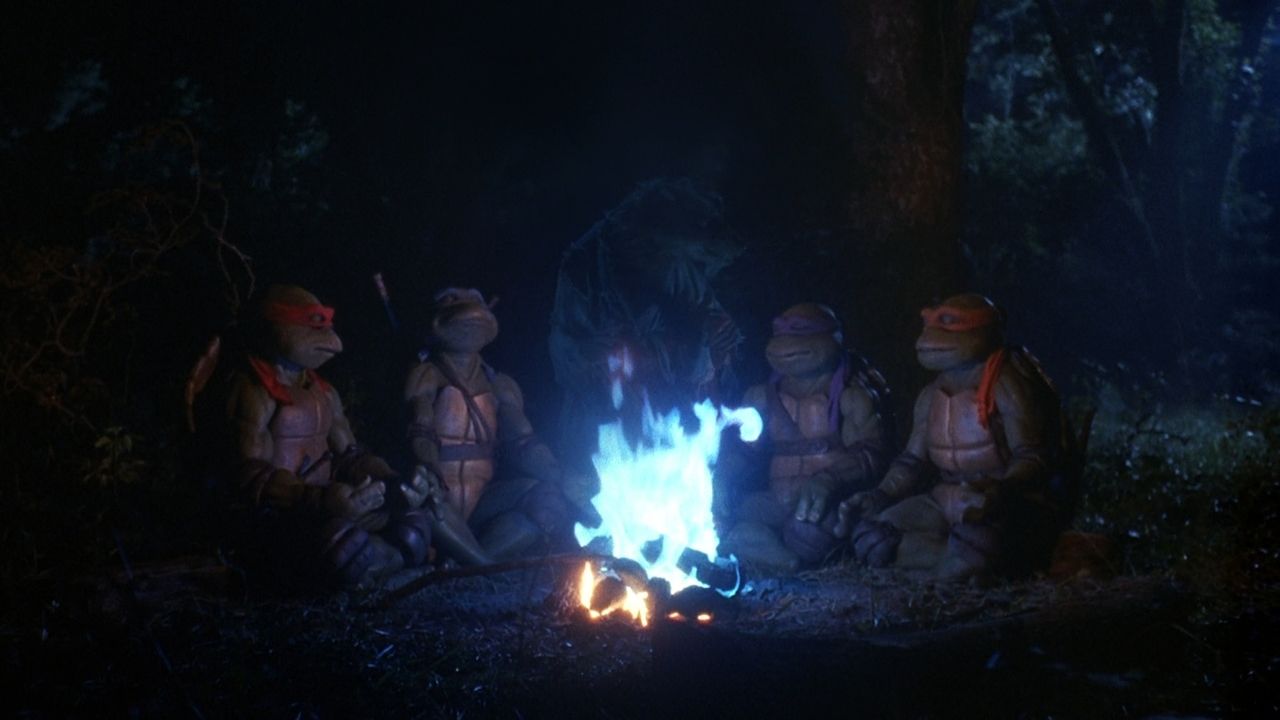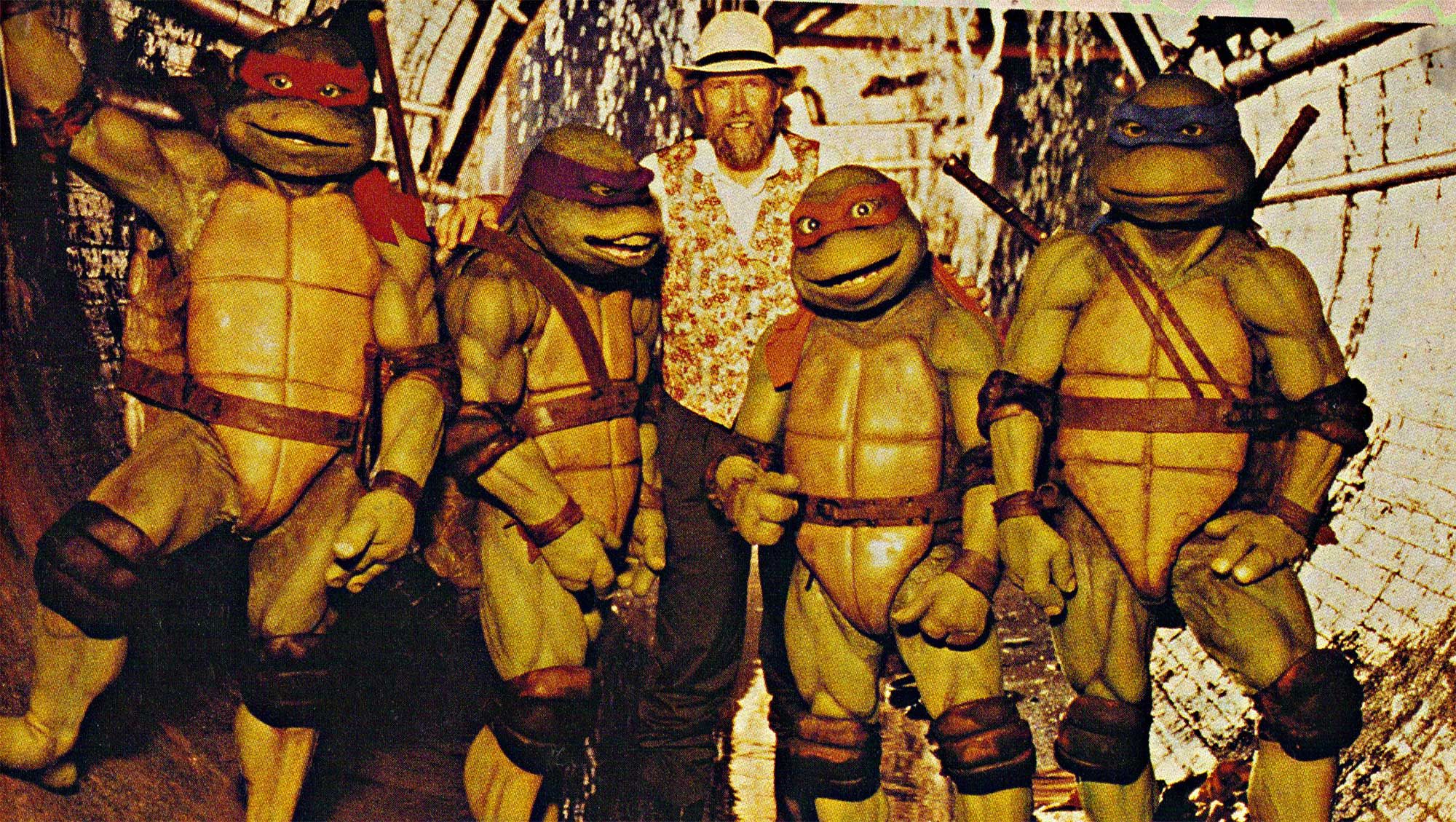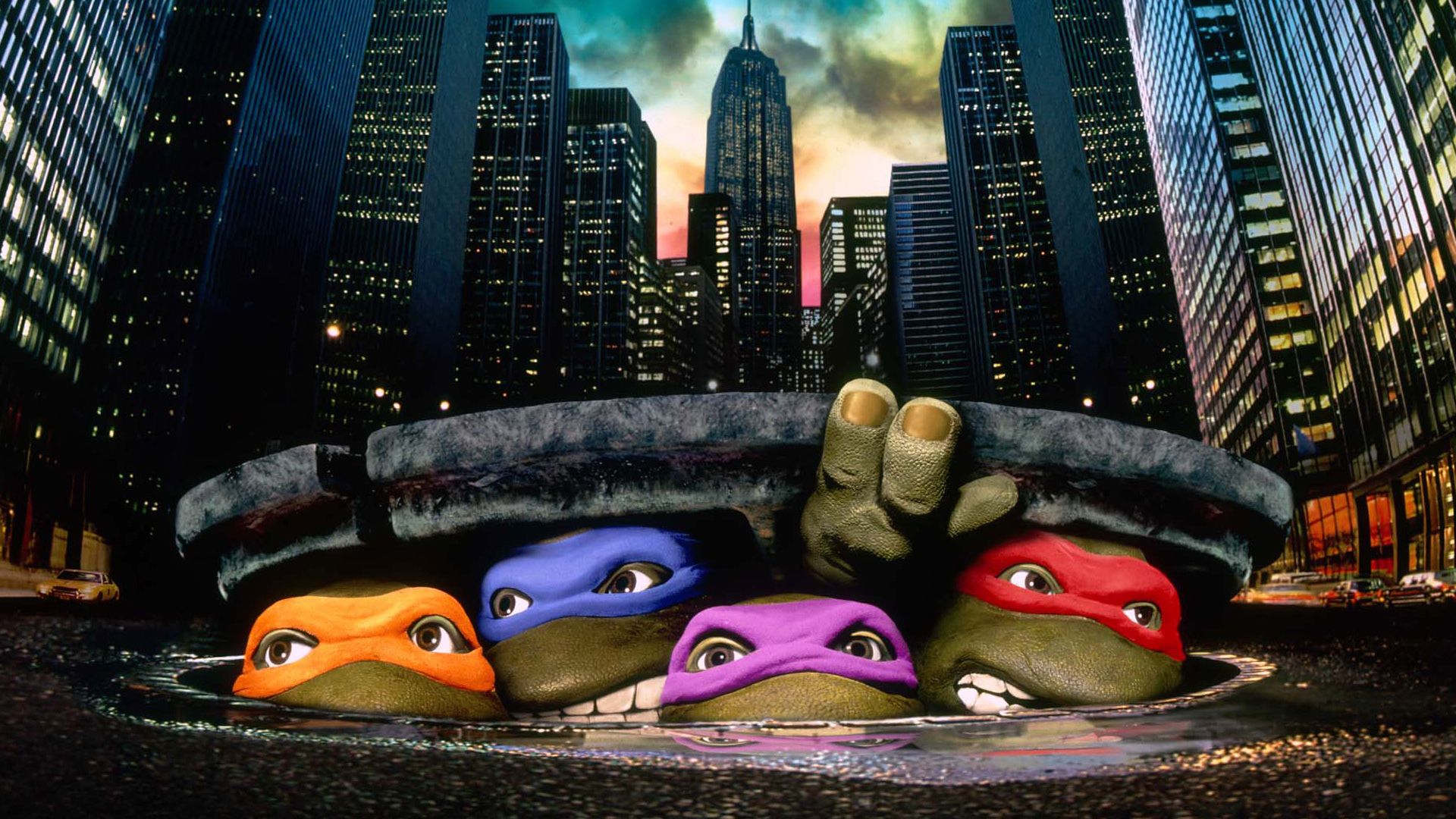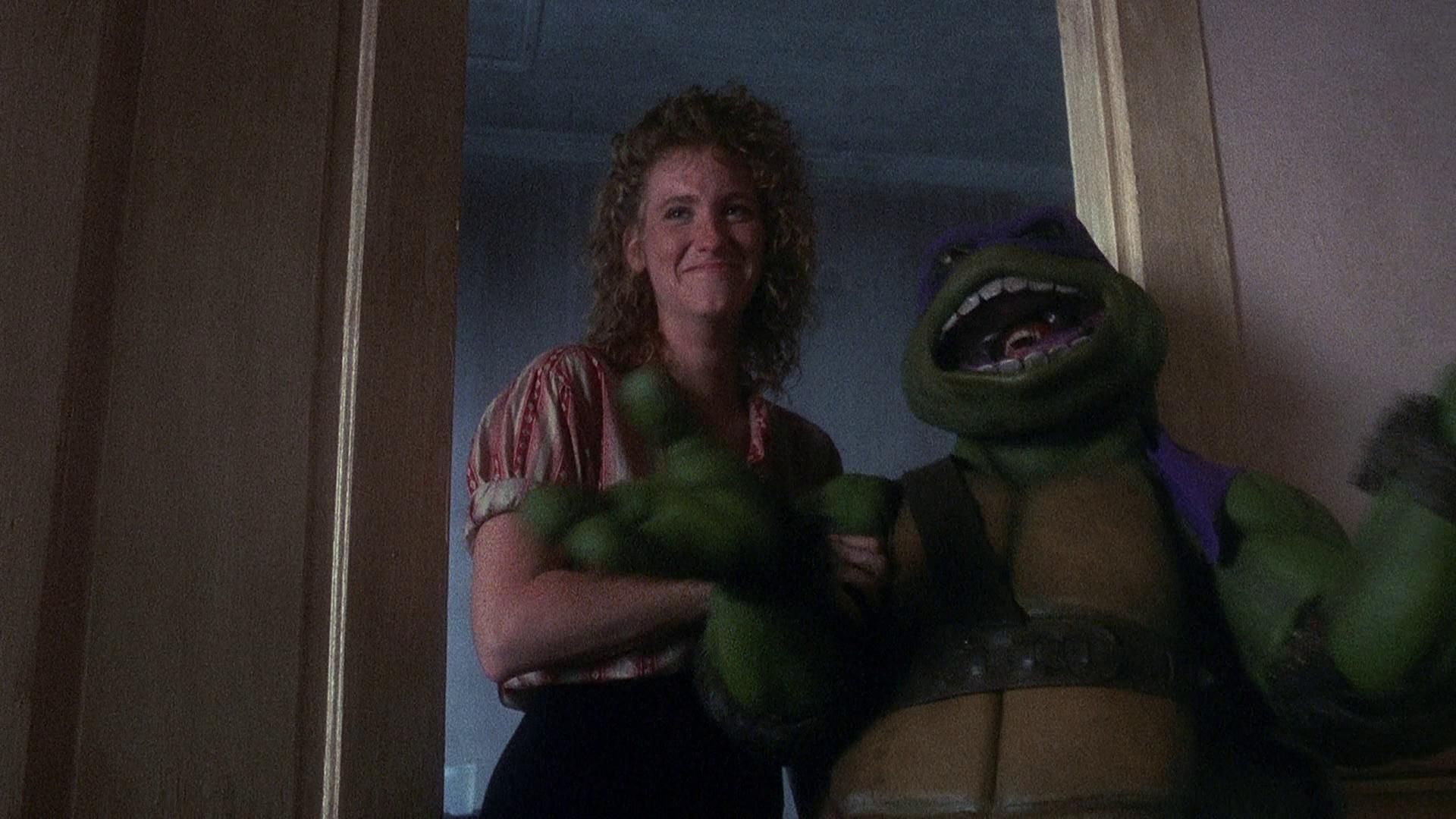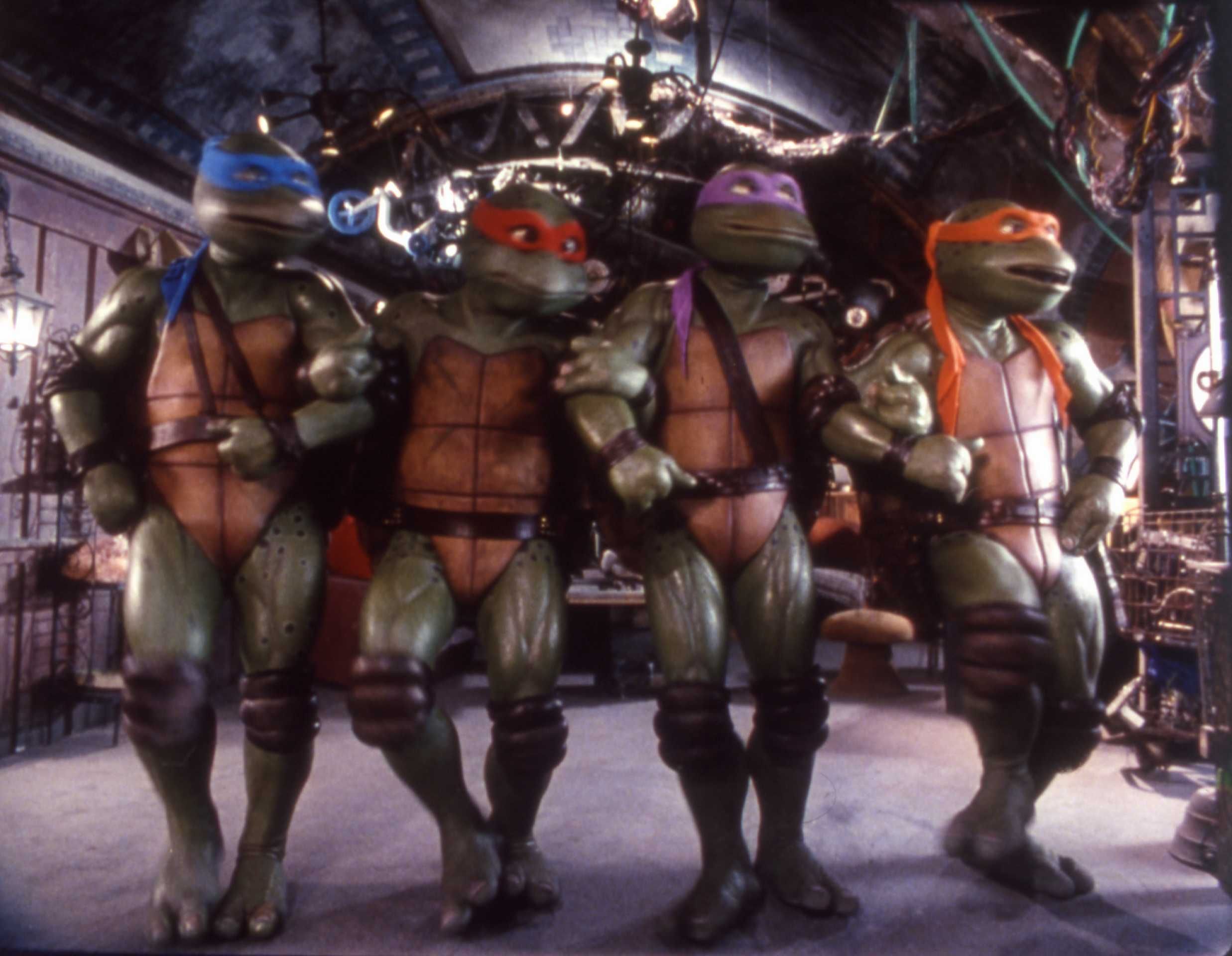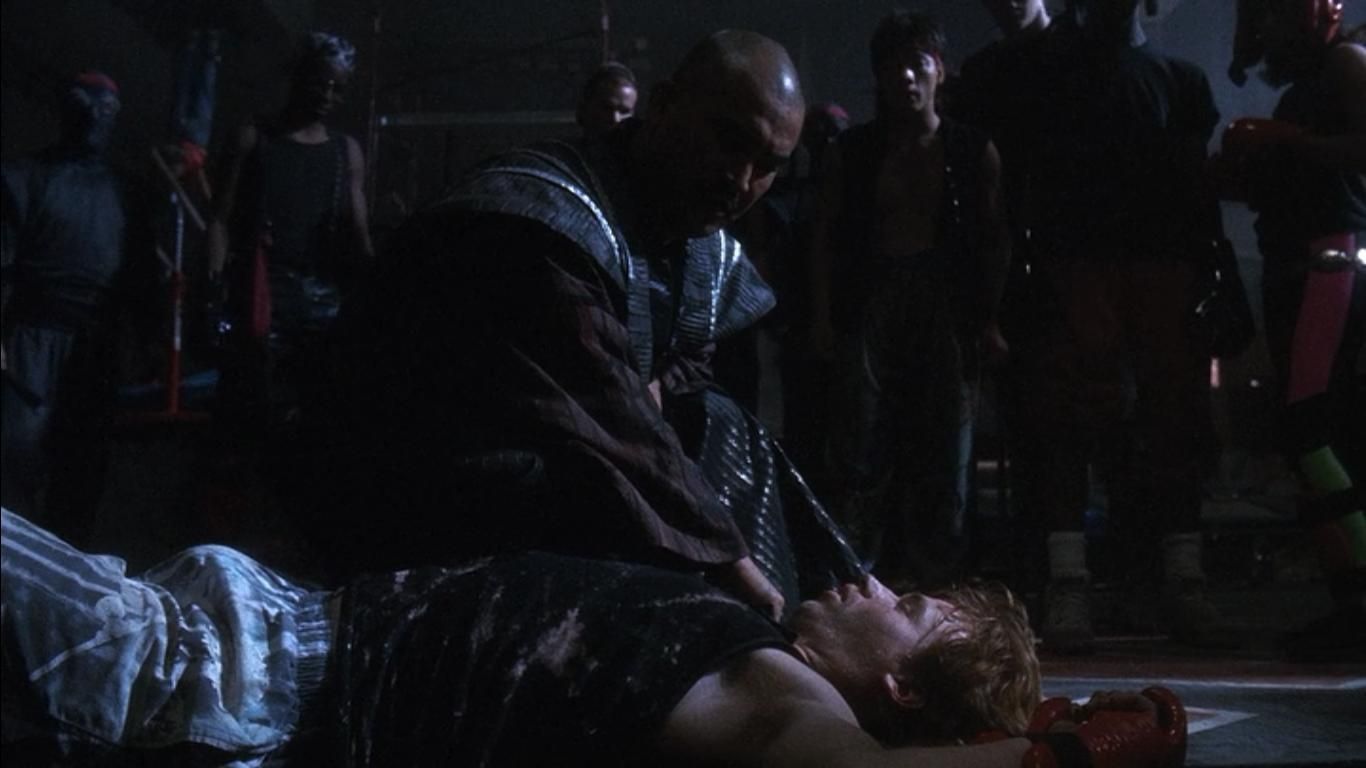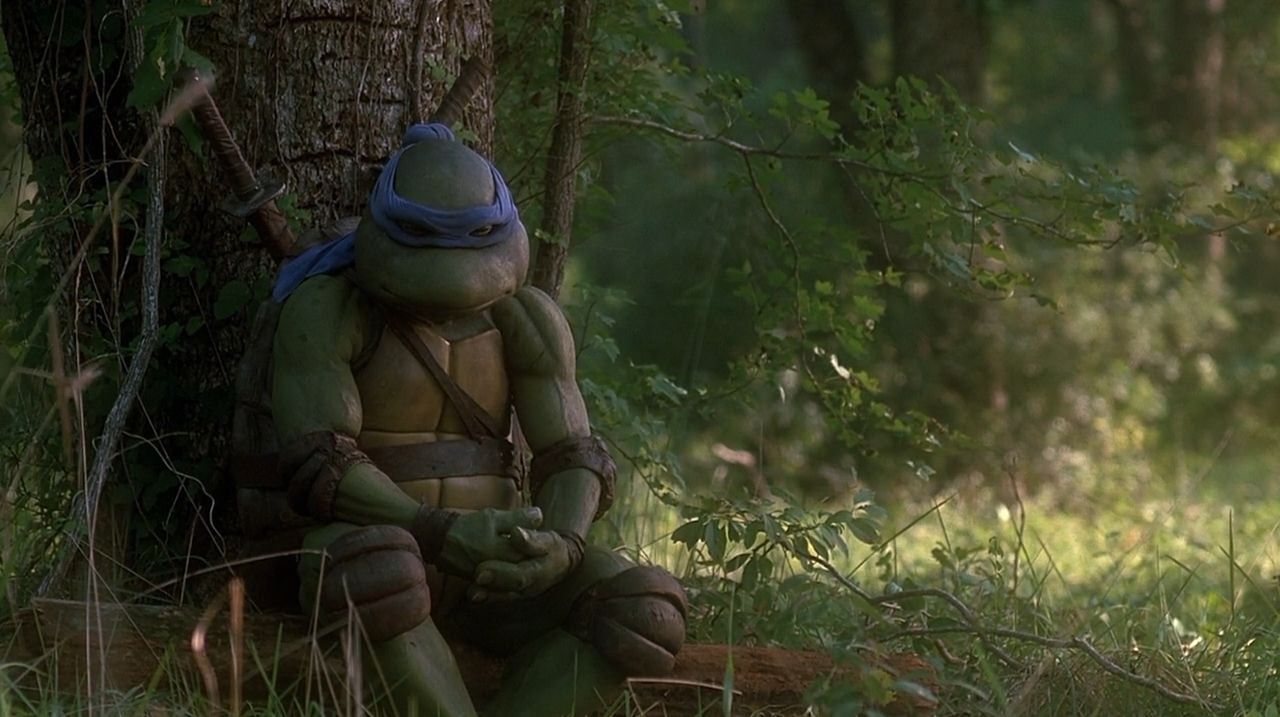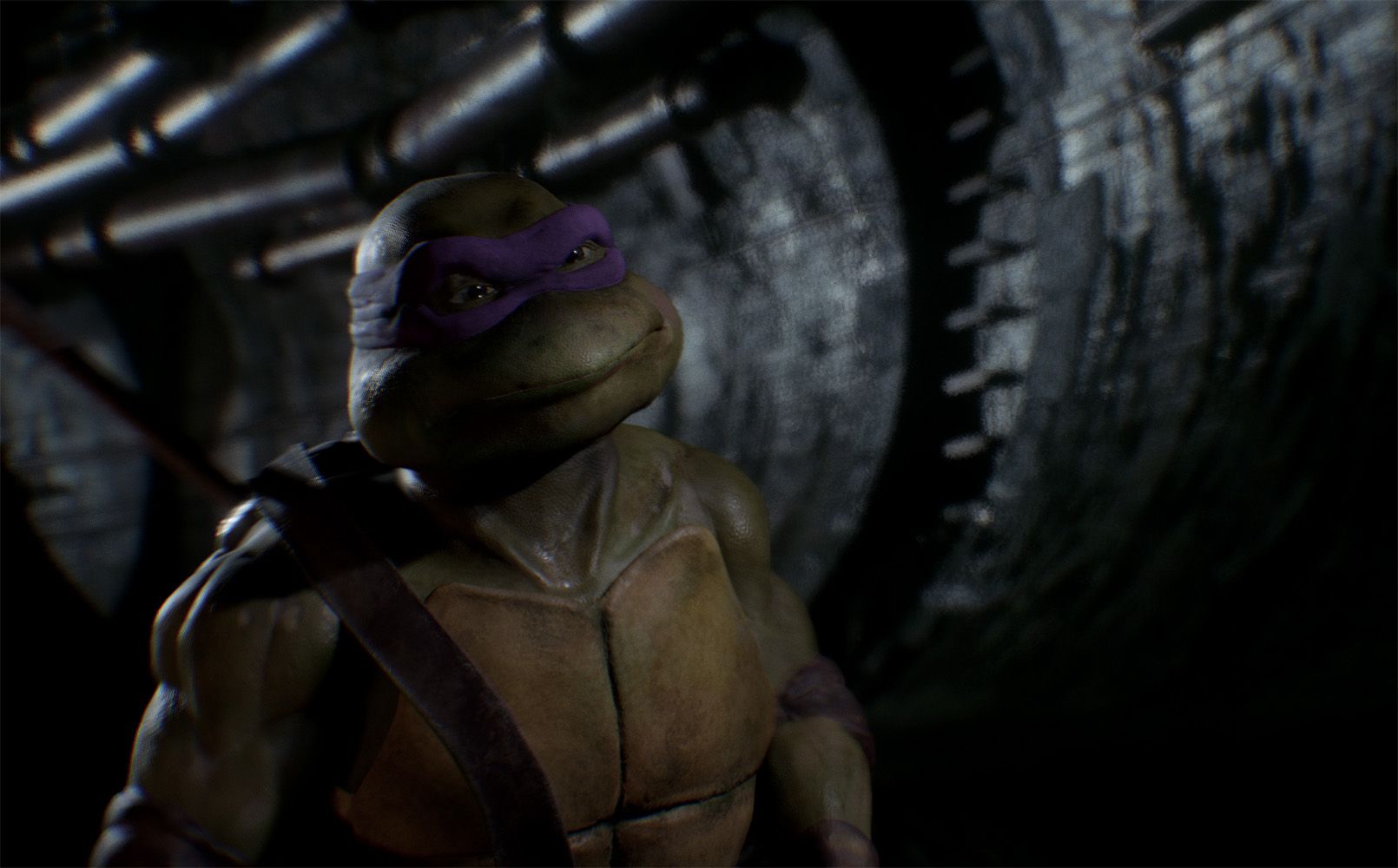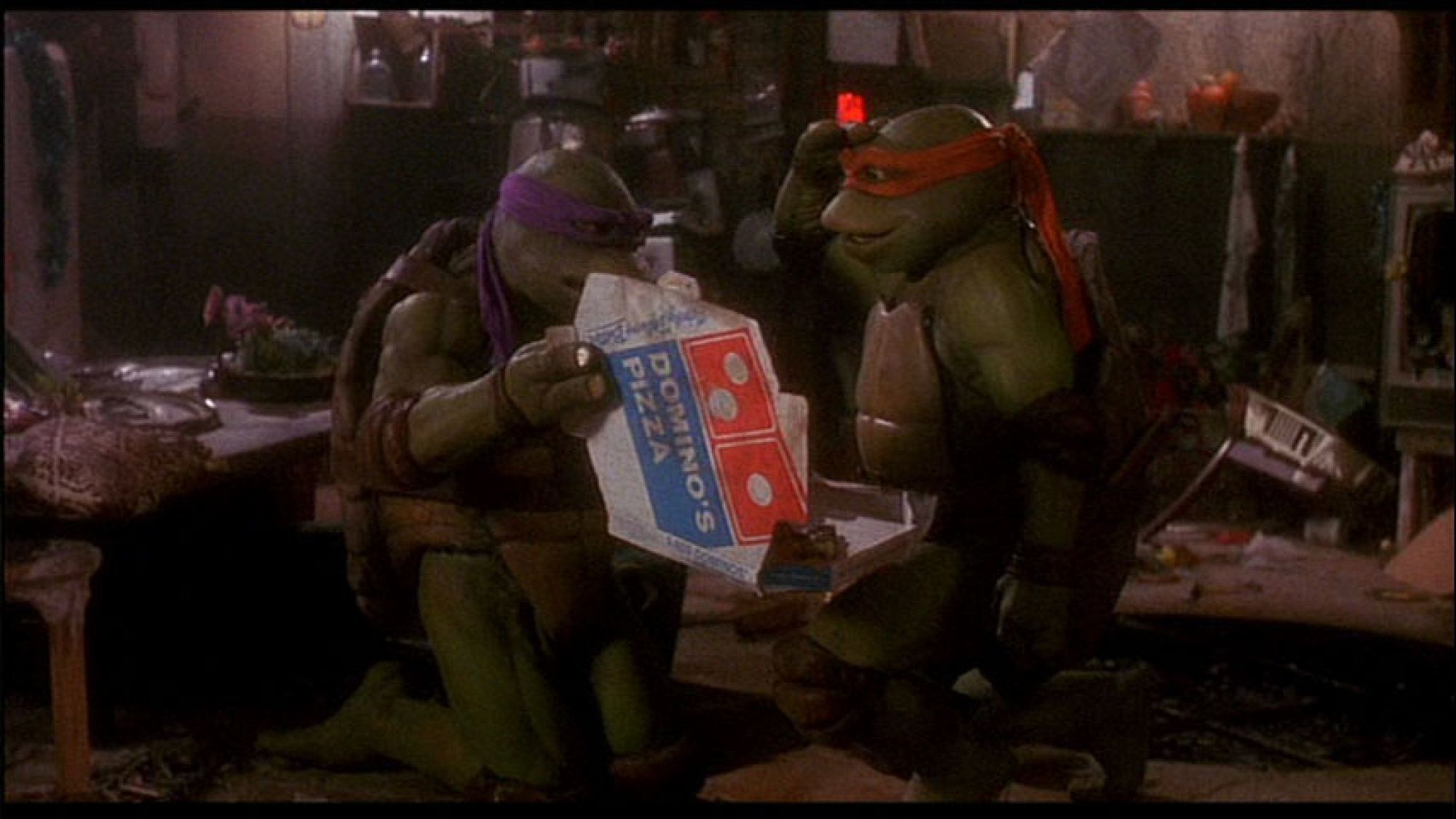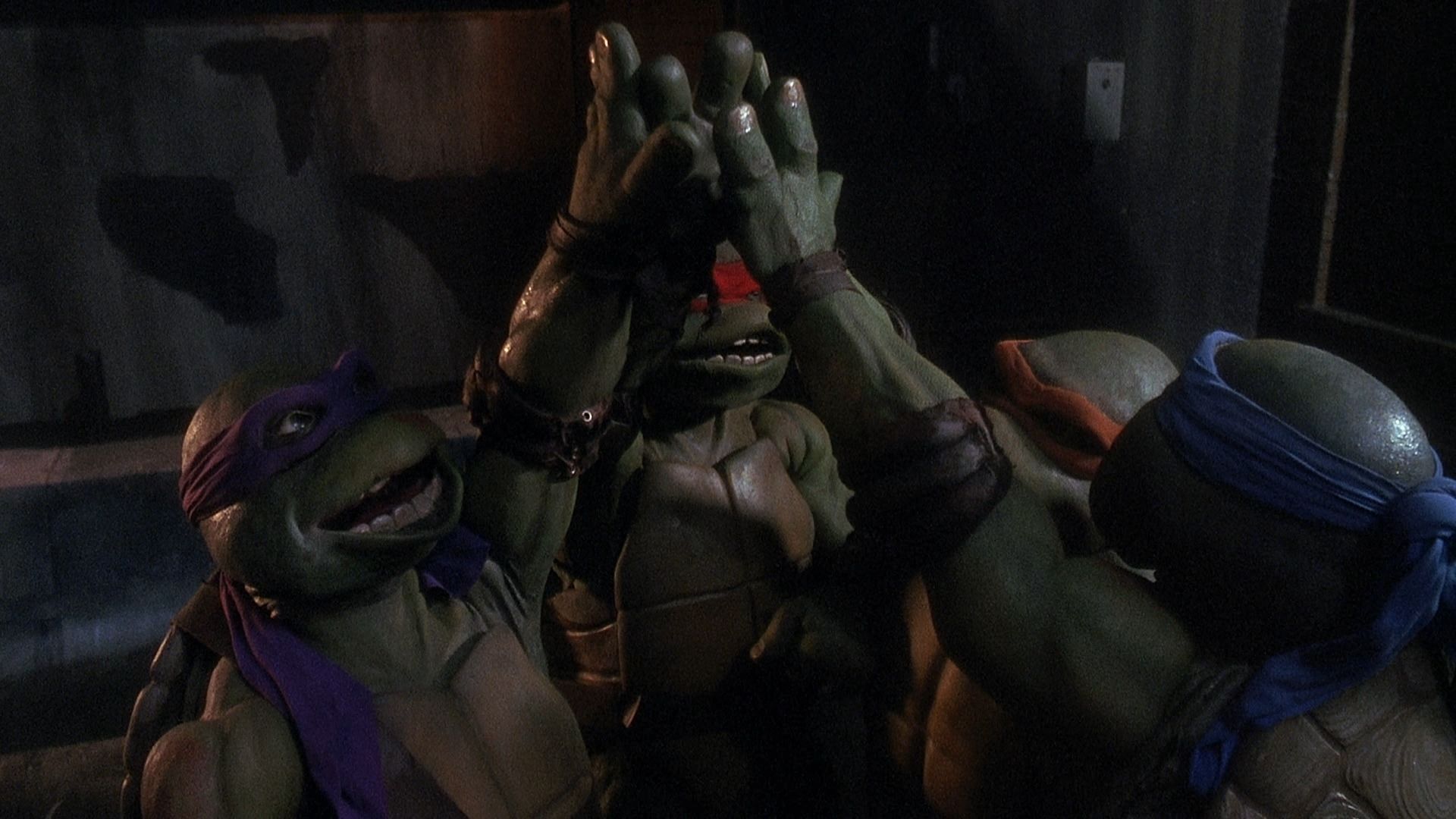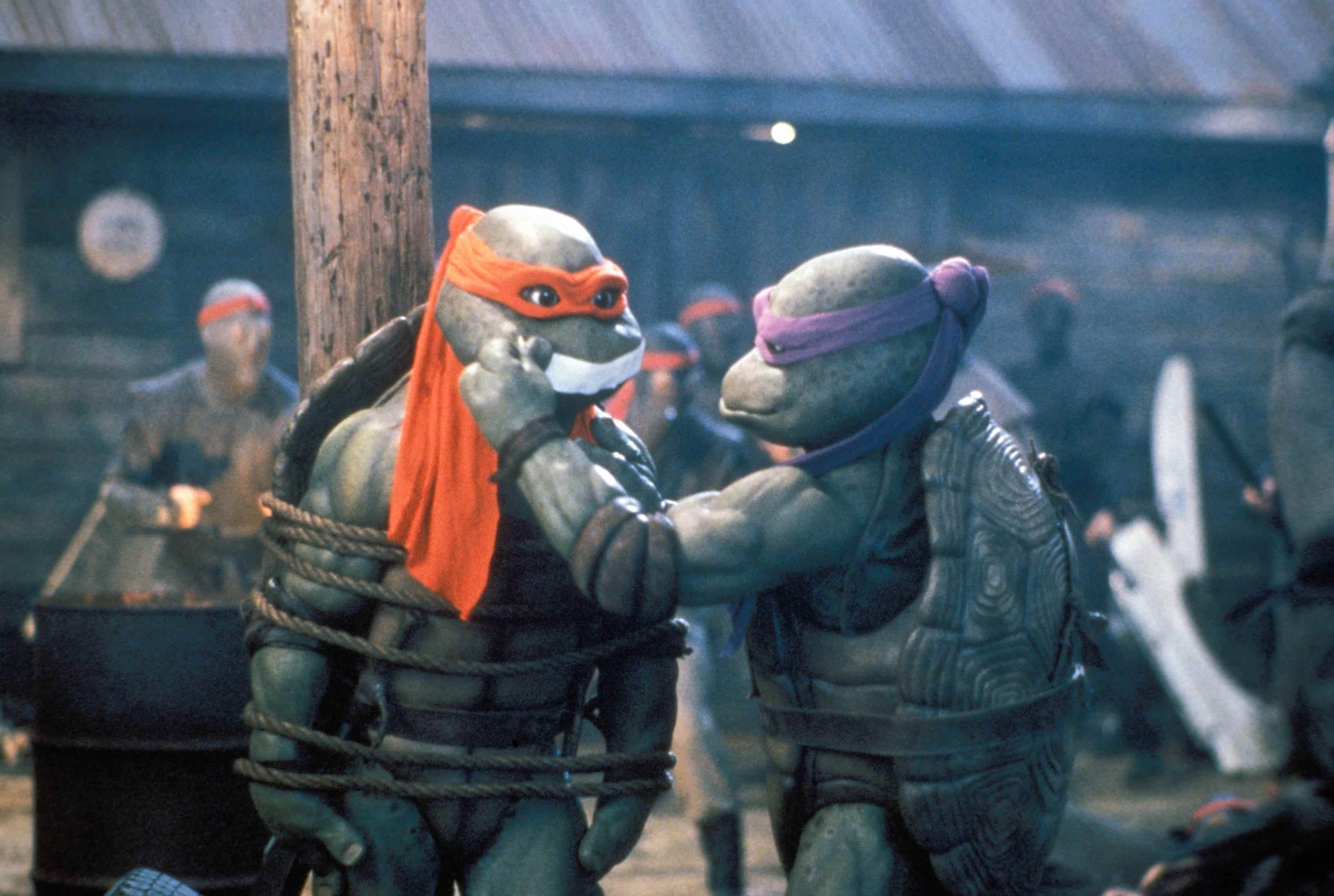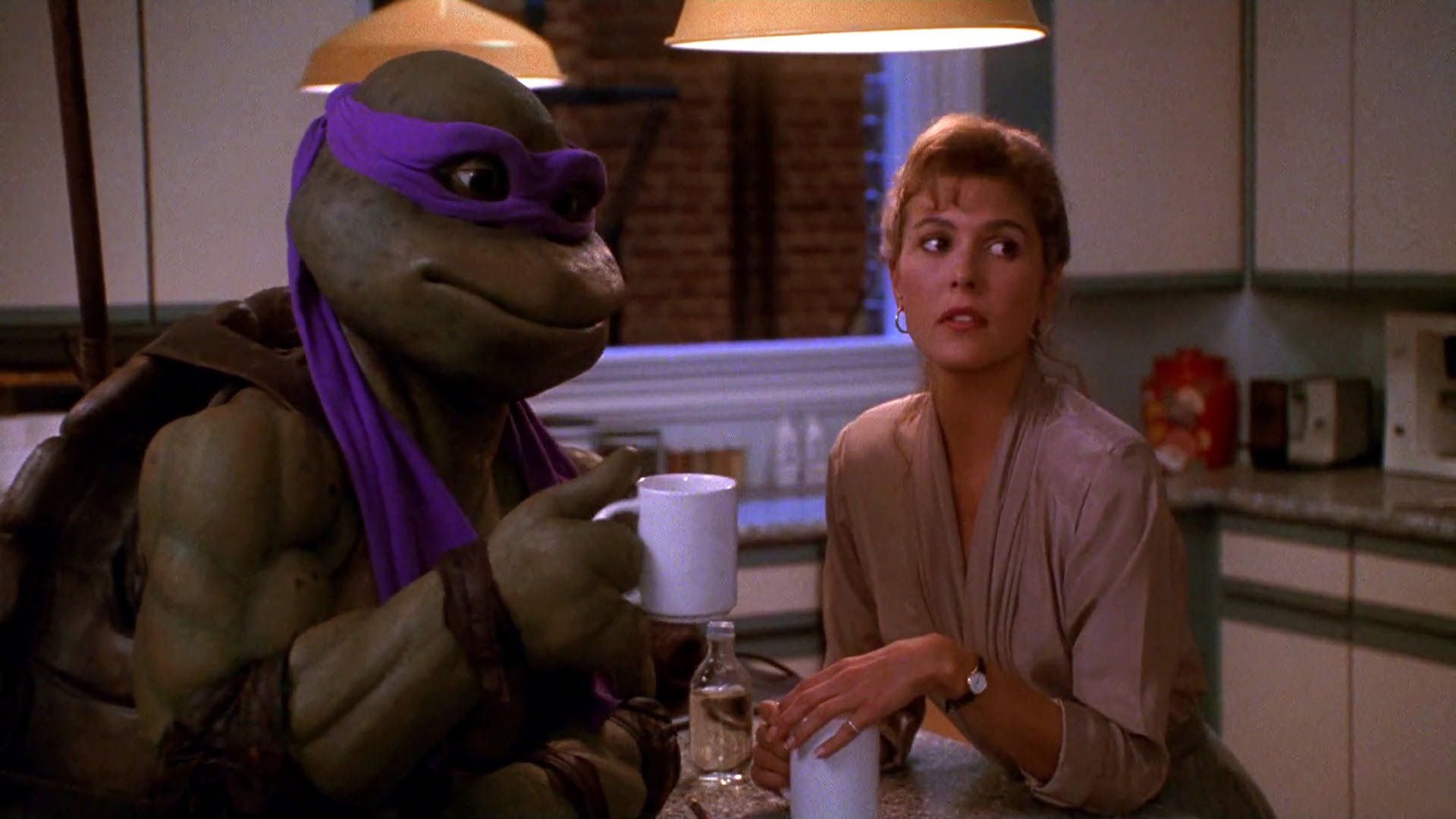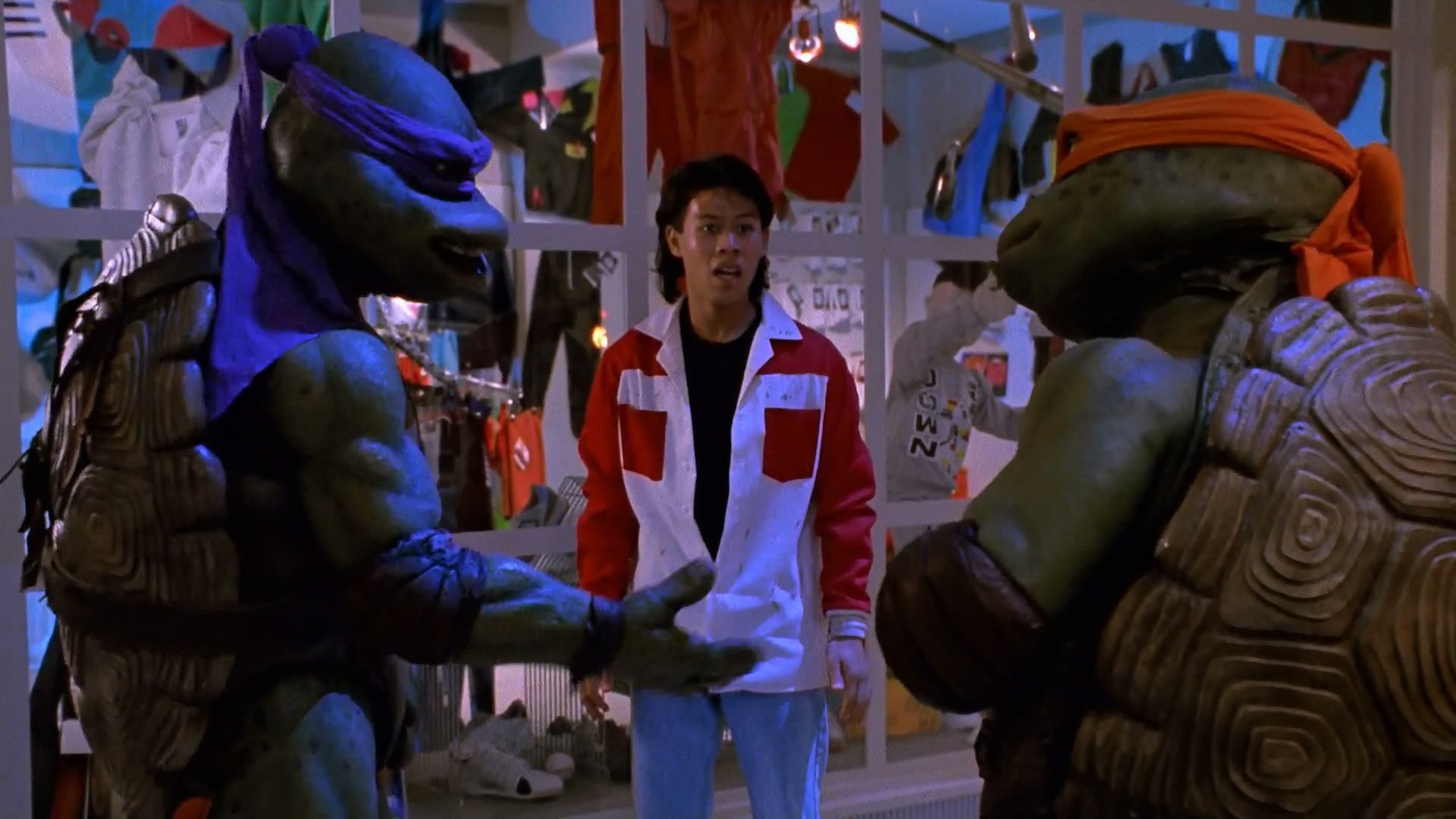Although films based on the Teenage Mutant Ninja Turtles are still being produced to this day, the early 90s trilogy which started it all is what we will be focusing on today. If, like me, you grew up with those movies, you might be thinking that the title of this article is erroneous. “Why would you call it disastrous?”, you hypothetically say. “The first one was incredibly successful!”
You would be right thinking this. The first one was a surprise success, both with movie-goers and with critics. However, each sequel was met with diminishing returns, even with the Turtles being forced to use the time travel gimmick to spice up their third outing. That one barely made twice its budget, which might seem like a pretty good deal. However, TMNT III had a budget of 17 million dollars, which was microscopic for a major production, even 25 years ago.
So what caused such a precipitous downfall? The Turtles were once looking to be the major dominant franchise of the 1990s but fell out of favour with the public before the decade was over. This article will examine what went on behind the scene of all three movies in the original trilogy, trying to establish what worked and what didn’t, through 25 lesser known facts about the Turtles’ silver screen adventures. As you will see, the story of this once-unstoppable phenomenon is a fascinating one.
25 Why Are We Even Doing This
The second TMNT movie was a success, although on a smaller scale than the original. Instead of breaking records, it only made its budget back three times.
The Turtles phenomenon was clearly nearing its end.
The problem for Golden Harvest, the Hong Kong studio, is that they had already pledged their commitment to a third film. Expecting the movie to fail in every way, they unenthusiastically gave the project 17 million dollars, effectively cutting down the budget by 10 million, and then kept their hands off the movie entirely. Laird and Eastman had bigger ambitions for their Turtles, coinciding the release of the third outing with a similar storyline in both the comic and the cartoon. It was a good idea, but it couldn’t save TMNT III.
24 Gotta Stretch Those Dollars
The severe budget cut was a real problem for the production. TMNT III was supposed to take place in feudal Japan, which required expensive sets and costumes to make it come to life. If the money was going to be sunk in the costs of making the setting believable, then something else was going to suffer. No longer able to afford the realistic and technologically-advanced animatronics of Jim Henson’s shop, the producers instead went with All Effects Company. This might have saved everyone a few bucks, but they lacked Henson’s expertise. The result: the Turtles costume look much cheaper the third time around, with visible seams and strange spots all over their skin. The facial expressions were also lacking, and the Turtles ended up looking creepy instead of friendly.
23 The Next Mutation
Before everyone realized how bad of an idea it would be, a fourth movie was in the planning process while TMNT III was still in production. The fourth one would have seen the Mutagen inside the Turtles reactivate, giving them a more fearsome appearance and evolving them. That idea was scrapped but did appear in the cartoon.
Another idea pitched was to include a fifth turtle name Kirby.
The new turtle was supposed to honor legendary comic creator Jack Kirby. He might have been a great artist, but it would have broken with the established naming convention. The idea did make it into the live-action TV series under a different form. Instead of Kirby, “The Next Mutation” features a female turtle named Venus De Milo.
22 Favorite Son
Kevin Eastman and Peter Laird might have had some difficulties dealing with executives and producers over the making of the three original Teenage Mutant Ninja Turtles movies, but it doesn’t mean that it was all doom and gloom. Thought they are less favourable to the second and third one, Eastman and Laird both came out saying that the 1990 film is their favourite adaptation of their comic (as of 2015, at least). That includes the cartoon, the newer movies, and the television show. As for reasons, they cite the quality of the costumes, the script which is almost a direct adaptation of one of the comic’s storyline, and the tone of the movie, which strikes a better balance of seriousness and humour than its sequels.
21 Unlikely Origins
The Teenage Mutant Ninja Turtles started as a comic in 1984, and within a few years, the property was turned into a cartoon primarily aimed at children. The cartoon contrasted with the original comic, which was much darker in nature. The first people to see potential for a darker live-action adaption were not who you would expect for this kind of project. Gary Propper and Kim Dawson are respectively the road manager and producer for the comedy shows of Gallagher, the man who smashes watermelons and calls it humour. Propper and Dawson were fans of the Turtles, and after meeting with Kevin Eastman and Peter Laird, creators of the comic, they convinced them that they could make a movie that was closer to their original vision than the sugar-coated comedy of the cartoon.
20 Unproven Commodity
After getting a script writer on board, and after nearly two months of back and forth with Eastman and Laird, a scenario was finalised, combining the dark storyline of the comic and the humour of the cartoon. In the meantime, the TV show was slowly gaining steam, as were the toys, but TMNT was still an unproven brand.
The movie project was rejected by most studios in Hollywood before it was brought to Golden Harvest.
The Hong Kong company specialized in martial arts movies and had produced several Bruce Lee films. They originally gave $3 millions for the project, a figure which would inflate along the way. Shooting could finally get under way, but started without a distributor. New Line, which at the time was more known for B-movies, finally agreed to finance the rest of the movie and handle distribution. That’s a move which they would not regret.
19 Cadillac Man To The Rescue
Just before shooting was scheduled to start, Judith Hoag, the actress portraying April, was playing in Cadillac Man alongside Robin Williams. Discussing her future project, she mentioned that she was not familiar with the Turtles, and that she was worried about how to get into character. Luckily for her, Robin Williams was already a huge fan of TMNT. In fact, he had a huge comic book collection at home, including some early numbers of the Teenage Mutant Ninja Turtles series. Williams lent Hoag a few books so that she could understand her character better, and most would argue she did a fine job in the end. As for Williams, it was just one more opportunity to prove his geek cred, as if a man who named his daughter “Zelda” and confirmed that it was because of Nintendo’s series (and not because of a love for Zelda Fitzgerald) needed to prove anything.
18 Location Is Everything
Thought the Teenage Mutant Ninja Turtles are very much associated with the city of New York, filming there can be prohibitively expensive. Looking for something more adapted to their modest budget, the production set up shop in North Carolina. The tax breaks offered by the state were advantageous, and whatever was lost in authenticity was made up by putting up an approximation of New York’s skyline in the back of every set.
In the end, only four days of shooting were needed in actual New York City.
Most of these included landmarks to make sure that movie-goers knew that they were still watching a New York movie. The only problem with shooting in North Carolina was the proximity to the local airport. With the Turtles’ facial expressions being radio-controlled, the airport’s tower signals would sometimes interfere, sending the Turtles into involuntary spasms.
17 A Turtle For Every Occasion
Once location was secured, the next big thing was bringing the Turtles to life.
The costumes were created by the legendary Jim Henson and ate up a big part of the movie’s small budget.
The results were stellar, but the technology of the time was somewhat limited. Therefore, for the sake of the actors, two sets of costumes were created. One Turtle costume was specifically made for close-ups and dialogues. The heads were filled with electrical motors, while the shells contained all the wiring and batteries, as well as the cooling devices to keep everyone as comfortable as possible. These weighed 70 pounds each. The second set was called “action turtle”: The head and shells were electronics-free, making it lighter. However, it could only be used with certain camera angles because it gave the turtles a creepy, lifeless stare.
16 A Tight Fit
In the cartoon and in the original comic, the Turtles are all slightly shorter than your average human being. This was impractical for the live-action version, since all of the actors portraying the Turtles were at least 5’6’’. The costumes had to be sized similarly, but the now bigger Turtles brought with them an unforeseen issue:
The full-sized costumes couldn’t fit in a regular-sized manhole, which is a bummer when half of your movie takes place in sewers.
Therefore, production had to construct their sets with custom-sized manholes, much larger than the ones you would usually encounter in North America. You might think this is not a big problem since the sewers were a set, but the shots of the turtles entering the underground were originally going to be filmed separately. The size issue forced the producers to reconsider.
15 Instant Weight Loss
The Turtles’ costumes looked really good on screen, but it came with a price. Being so heavy, and coupled with the North Carolina heat, the costumes caused the actors to overheat very fast. In fact, two takes could be shot at most before they needed a break to get some fresh air. Despite putting a hole in the mouth of the costumes, and with a cooling system being housed in the shell, the actors still were sweating so much that it was breaking down the rubber from their suits. Eventually, the crew built a portable bubble of sorts with air conditioning in which the Turtles could relax in between takes. Even with all of these precautions, the four main actors ended up losing 20 pounds each, more or less, by the end of the shoot.
14 Turtle Sounds
The first movie was directed by Steve Barron, who was hired because his vision coincided with that of Kevin Eastman and Peter Laird. However, his ideas often clashed with that of the producers, who wanted something more kid-friendly. The first place where the director butted heads with his bosses was on the soundtrack.
Barron envisioned a punk-rock sound to go with the Turtles’ attitude.
That’s why he had the character of Danny wear Sid Vicious t-shirts for the whole movie. The producers, on the other hand, thought that pop and rap would be more commercially viable. To that end, they got MC Hammer to sign on, and they commissioned “Turtle Power” from little-known duo Partners in Kryme to serve as the movie’s theme song. That formula would follow into the sequel.
13 “He’s Gonna Be All Right”
Another place where the director and the producers clashed was how brutal they wanted the movie to be. The studio wanted a rating closer to PG in order to maximize the amount of people who could see it in theaters. Steve Barron, however, had many more intense ideas. For example, in the script, the young Foot Clan soldier who gets a beating at the hands of Tatsu was not supposed to survive. This was going to demonstrate Tatsu’s ruthlessness and firmly establish him as a villain to be taken seriously. The ratings board thought that was a bit much, so changes were made. During re-shoots, the scene’s ending was modified to show that the boy was still breathing, with one of his friends adding “he’s gonna be all right”. In the French version, however, the changes did not stick and the boy doesn’t make it.
12 So Close To The End
The multiple differences in opinions between Steve Barron and the producers led to the director being fired near the end of the production. After seeing an early cut, the studio thought the movie was becoming too dark, which was the complete opposite of the lighter tone they were hoping for.
The final cut of the movie was not made by the director, and the tone of the theatrical version changed significantly.
Some jokes were added to please the kids who only knew the Turtles from the cartoon, while some of the more serious parts were kept out. Among the deleted scenes, we could have seen Michelangelo suffering from depression following Splinter’s kidnapping, and we could have seen Leonardo training more intensely to avenge Raphael’s beating at the hands of the Foot Clan.
11 The Adventures Of Corey Feldman
Former child star Corey Feldman was asked to provide the voice for Donatello in the first movie, mostly as a favour to the producer. With the film being made independently from big studios, the budget was modest, and he was only offered $1500 for the voice-over gig. This is a paltry figure compared to what the movie ended up grossing. Feldman, busy battling his personal demons, did not return for the sequel. However, having cleaned up his act by the time the third movie came around, he was approached to reprise the role. Unfortunately for Feldman, the third one was once again filmed on a smaller budget. Combined with the fact that his own star had faded after his issues had brought him negative publicity, he was once again paid a measly $1500.
10 Pizza War
The Turtles’ love of pizza might be something that was made canon in the 1987 cartoon, but that element still carried over into the live-action movie. With their name being so associated with pizza, the different chains in North America were competing fiercely for the right to sponsor the movie and flood the market with tie-in promotions.
Pizza Hut ended up winning that one, but they did not have the last laugh.
Since the publicity rights were not completely negotiated by the time the movie started shooting, product placement was treated as a completely different issue. In that case, it is Domino’s Pizza which appears as the Turtles’ brand of choice during the film. Their trademark box can be seen several times, such as when a delivery driver has to slip an entire pie through the grating on the sidewalk.
9 Money In The Bank
Despite all the difficulties securing financing for the film, and with most of the budget being spent on the costumes, and the director leaving before the editing was done, Teenage Mutant Ninja Turtles still made it to movie theaters on time in March of 1990. Made on a $13.5 million budget, the movie grossed $135 million in North America alone. When combined with its overseas box office, the movie made $202 million. It was a huge return on investment for everyone involved (except maybe Corey Feldman), and all that money coming in was good enough for the record books. At the time of its release, and for four years afterwards, it was the highest-grossing independent movie of all-time. It was eventually passed by another movie you might have heard about, this one called Pulp Fiction.
8 No Rest For The Wicked
By the time Teenage Mutant Ninja Turtles made it to theaters, Turtle mania was in full swing. Finding investors for the first movie might have been difficult, but the studio was throwing money at everyone involved to get the sequel out the door as quickly as possible. In the very definition of striking while the iron is hot, a little less than a year passed between the release of TMNT and TMNT2: The Secret of the Ooze. The studio was not only eager to cash in on a lucrative phenomenon:
The producers were also convinced that the Turtles were a passing fad.
Production for the sequel practically started as soon as post-production of the first one ended. Despite the increased budget, things did not go as smoothly as anticipated.
7 A Bad Fit
Despite a stellar performance in the first TMNT, Judith Hoag did not come back as April O’Neil in The Secret of the Ooze. Instead, she was replaced by Paige Turco, an actress who was more known for playing in soap operas at the time. Hoag was not even fired: her contract was for a single movie, and she just was not asked to come back for the sequel. Among the reasons cited, Hoag herself readily admits that it probably has to do with the complaining she did while filming the first movie. Apparently, she would complain about the insane filming schedule (six days out of seven, with 14 hours days) and the amount of violence that would be shown on screen. Despite TMNT 2 being much tamer, the producers still preferred to find someone new for the role.
6 A Complete Change Of Tone
Sure, the first Teenage Mutant Ninja Turtles had a dark storyline and atmosphere, especially for a movie about turtles using martial arts to defeat foes. However, it still managed to hit its target rating, and the movie was deemed appropriate for all ages (under parental supervision, of course).
The public still complained about the violent content, so a plethora of changes were ordered for the sequel.
First of all, the tone was shifted from something close to the comics to something resembling the popular cartoon. Second, the most singled-out character when it came to violence, Casey Jones, was completely left out of the script. In his place, the role of sidekick was played by Ernie Reyes Jr, the man inside Donatello’s costume in the original. The producers liked him so much that they made sure to create the role of family-friendly Keno just for him.


